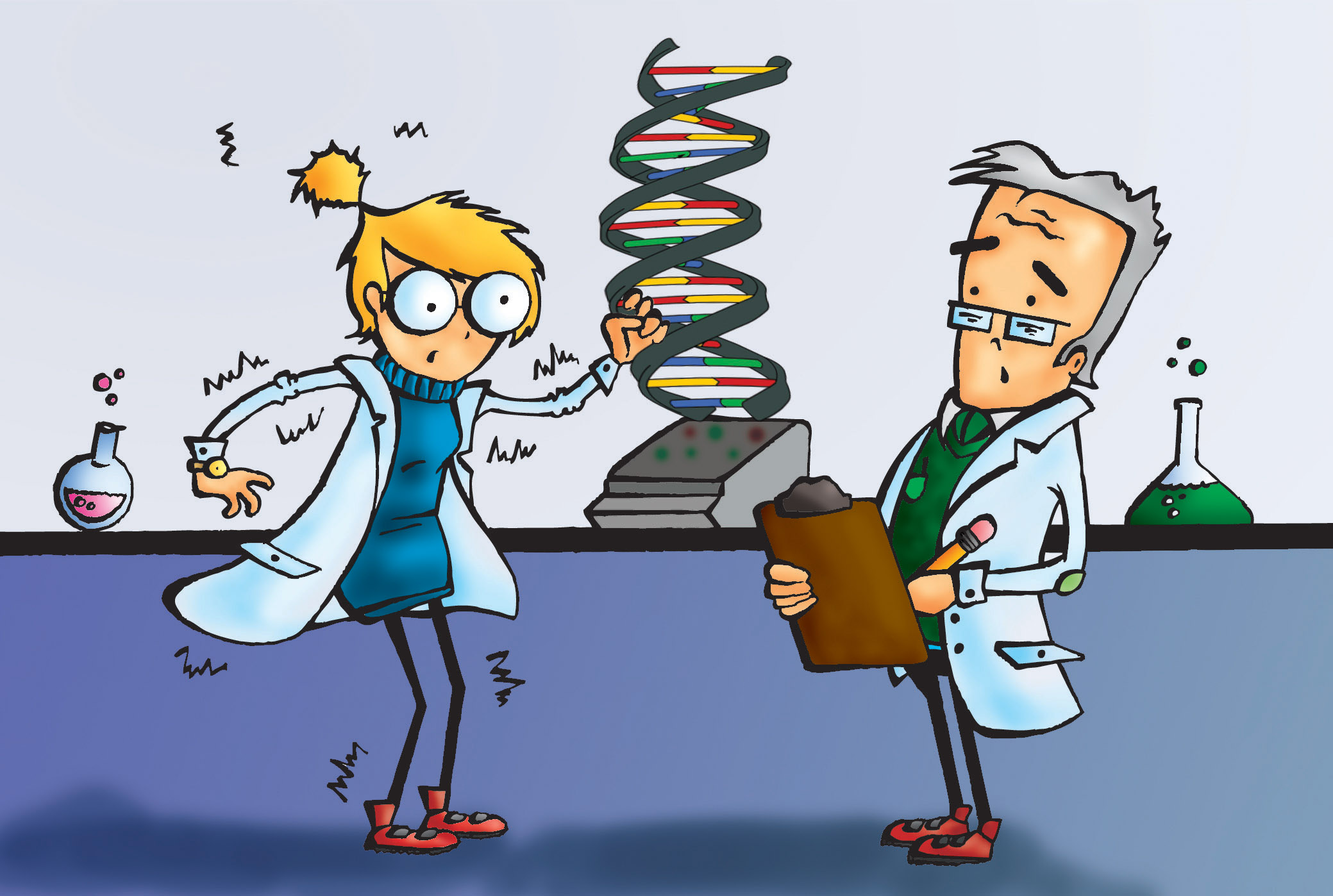Welcome back! This issue, we’ll be finishing up the PCR experiment. Last time, we left off with our extracted mouse DNA samples sitting in the fridge. Now, we’re going to thaw the samples out and begin the amplification of our DNA!
Polymerase chain reaction
We first need to establish a “master mix.” The master mix holds all of the components necessary for DNA amplification. This includes the template DNA (the strand of DNA that will be used as the starting point for amplification); DNA polymerase (an enzyme responsible for stringing together nucleotides, the building blocks of DNA); primers (reaction components that will help DNA polymerase attach onto the DNA); dNTPs (deoxynucleotide triphosphates, the nucleotide building blocks of DNA); restriction enzymes (used for cutting strands of DNA at specific locations); as well as a buffer and some other components.
Once all the ingredients of the master mix are combined, we put the test tubes in a thermocycler – a machine that regulates the temperature conditions for the PCR reaction. As mentioned in the previous installment of A day in the life, the thermocycler has three temperature stages: denaturing (95 Celsius), annealing (60 C), and elongation (75 C). This pattern of temperature fluctuation occurs for roughly two hours, resulting in approximately 30 cycles of exponential DNA amplification.
Electrophoresis
While the thermocycler is running, we can start setting up the gels that will be used for electrophoresis. Electrophoresis is a process that uses an electric current to run strands of DNA through a gel. DNA is negatively charged, so it will travel from a negative to a positive end of an established current. With the help of restriction enzymes, the DNA is cut into many differently sized strands.
The gel contains pores of various sizes. Depending on the size of the pore, certain strands will be able to pass through relatively quickly, while others will pass through the pores much more slowly. The result is that large bands of DNA will remain at the top of the gel, while smaller DNA bands will travel further down. Over time, we establish a size gradient of DNA bands that we can measure. We’ll get into some of those details below.
The first step of setting up the electrophoresis procedure is to make the gel. A certain quantity of agarose powder is added to a buffer. We then add a very small amount of “GelRed,” a fluorescent gel stain that will let us see the bands of DNA later. We then mix the solution thoroughly and heat it for a couple of minutes in the microwave.
Once the gel is cool enough to handle, though still hot enough to be in liquid form, it is poured into an electrophoresis apparatus. This is a holding tank that keeps the gel in place so the current can run through it. Once we pour the gel and confirm that there are no leaks, we insert a comb into the top of the gel. This creates wells that the amplified DNA can be loaded into so that it can be exposed to the current.
When the gel has solidified and the DNA samples have finished amplifying in the thermocycler, we can proceed with the electrophoresis. We remove the comb from the gel, fill the electrophoresis tank with buffer solution, and load the first well with a standard “DNA ladder.” The ladder contains DNA strands of various sizes, which will create bands in order of greatest to smallest size. By comparing these bands with the bands of our sample DNA, we are able to analyze our DNA.
Once all the wells of gel are loaded, we hook up the electrophoresis apparatus to an electric current and let it sit. When we return from our other tasks—lunch break!—we shut off the power source and remove the gel from the apparatus. The gel is brought to an imaging machine that takes a photo, allowing us to see the bands. We compare the bands to the standard ladder and make interpretations. The sizes of the bands, as well as the number of copies, are details we look for when analyzing DNA electrophoresis printouts.
Gaffes and flubs
As straightforward as this experiment sounds, if not performed with care, simple errors can occur that jeopardize efforts made to get to this point.
Though I have not specified the quantity of each component required for a master mix, the importance of accurate calculations for each ingredient cannot be ignored. Simply put, if there is too much or too little of a master mix component, the exponential reactions of the PCR will most likely not provide a significant amount of amplified DNA, and possibly even incorrectly amplified DNA.
When making the agarose gels, it is very important to actually remember to add GelRed. Colleagues and myself have committed the mistake of making the gel without including GelRed. The result is that no bands will be visible. There are instances when bands are not visible even though GelRed has been added – this is also crucial for the interpretation. However, if we are not sure whether or not GelRed has been added, this interpretation cannot be made and the electrophoresis must be performed again.
When running the electrophoresis, you always want to make sure that the negative charge is attached to the top of the gel, and the positive charge to the bottom. Remember: DNA is negatively charged. We want the DNA to run from the top to the bottom of the well. If the current is applied in the opposite way, the entire experiment will be ruined: the DNA will run off the gel in the wrong direction and the samples will be lost.
That’s it for this issue. Tune in next time, when we examine the technique known as western blotting!


